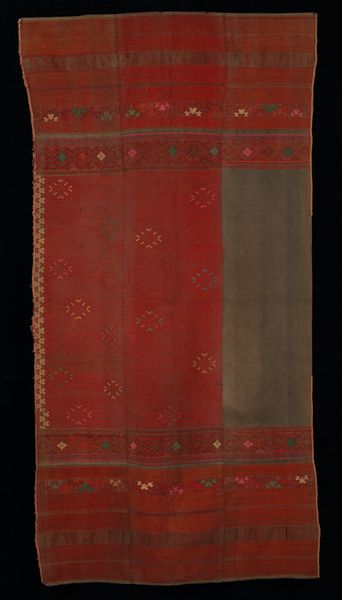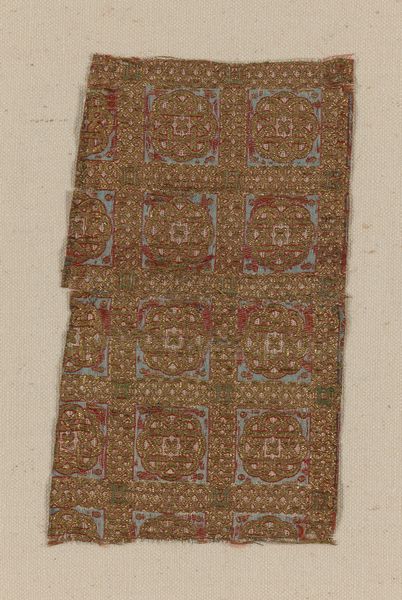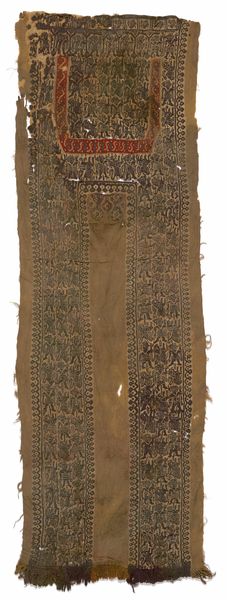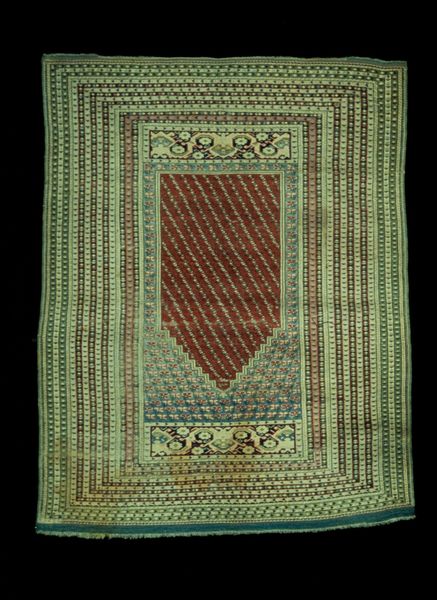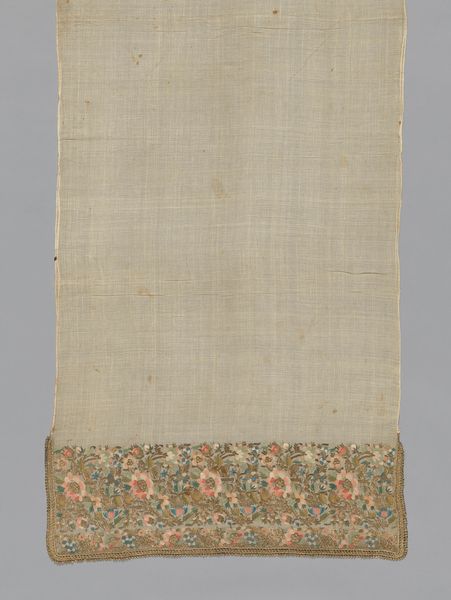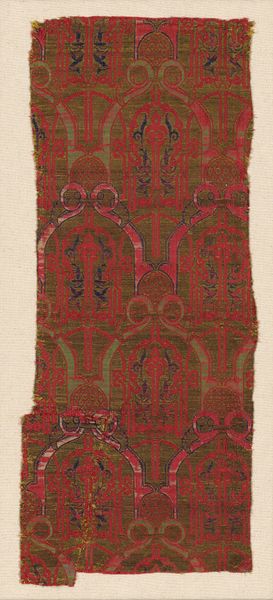
Fragment (From a Tunic) Roman period (30 B.C.– 641 A.D.), 5th/6th century
0:00
0:00
fibre-art, weaving, textile
#
fibre-art
#
weaving
#
textile
#
ancient-mediterranean
#
islamic-art
Dimensions: 22.2 × 32. cm (8 1/4 × 12 3/4 in.)
Copyright: Public Domain
This fragment from a tunic, woven by Coptic artisans, whispers tales of ancient syncretism. The borders teem with motifs, repeated in a rhythmic pattern, suggesting both order and continuity. We see stylized floral and geometric forms—a dance between the natural world and human intellect. These patterns evoke a sense of decoration and protection, reminiscent of borders in ancient Greek pottery or Roman mosaics. Note especially the repeated floral patterns. This same motif, though rendered in countless variations, appears across millennia and cultures. From the lotus in ancient Egypt, symbolizing rebirth, to the rosettes adorning Renaissance tapestries, the flower persists. It evolves, yet retains its link to life, beauty, and the cyclical nature of existence. Perhaps, subconsciously, we are drawn to these symbols because they resonate with our own fleeting existence. They remind us that like the repeated patterns, life is also a cycle that transcends time. The emotional power of the image lies in its ability to stir this primal recognition within us. The fragmented tunic reminds us that motifs continue to be reborn, repurposed, and revitalized across eras.
Comments
No comments
Be the first to comment and join the conversation on the ultimate creative platform.





